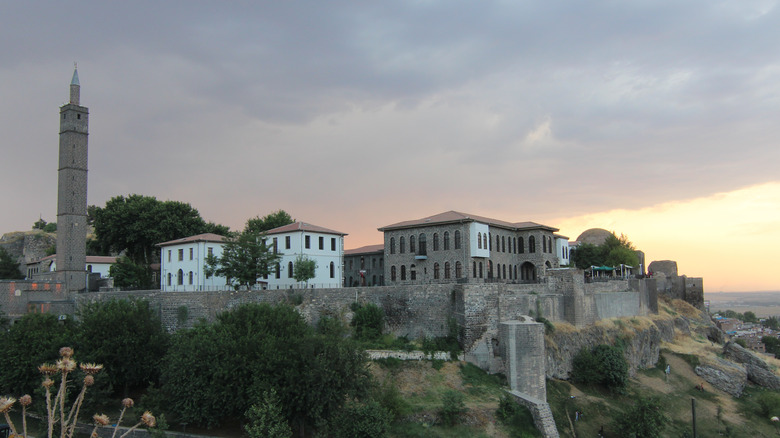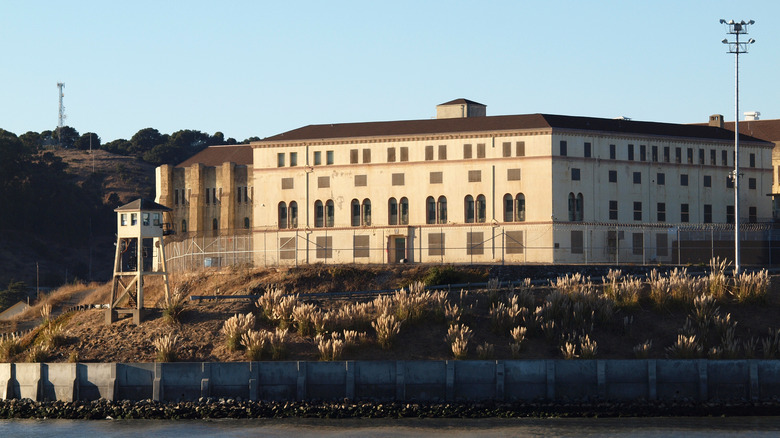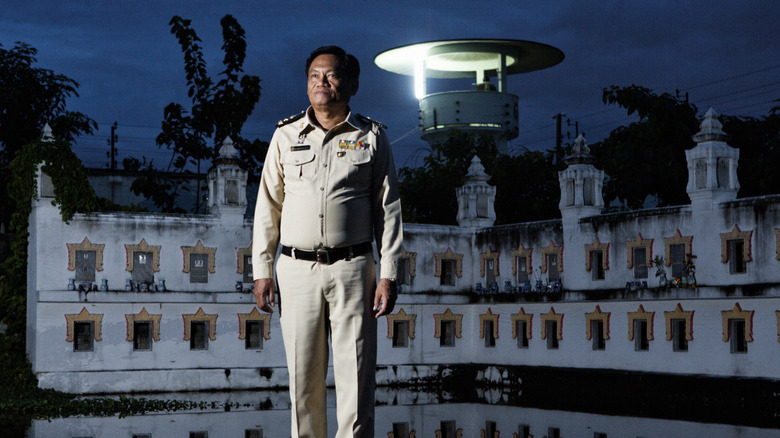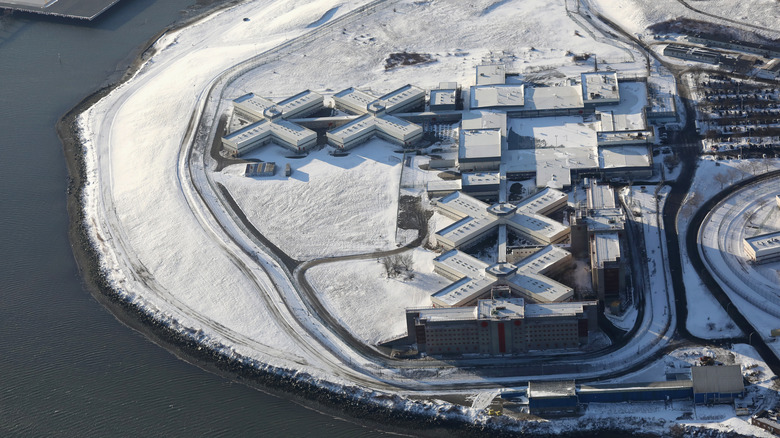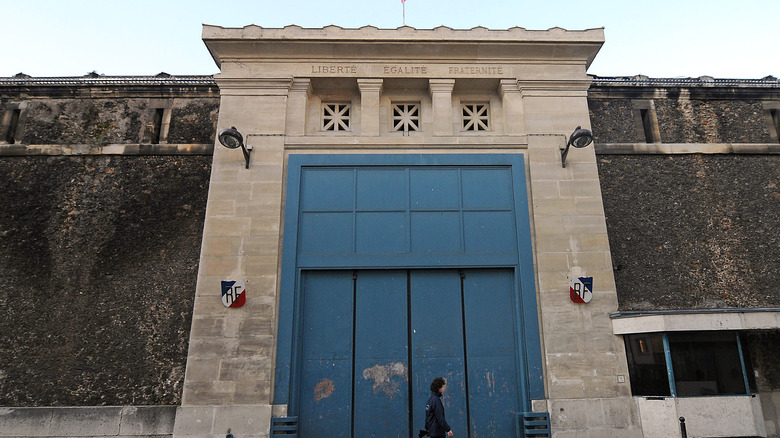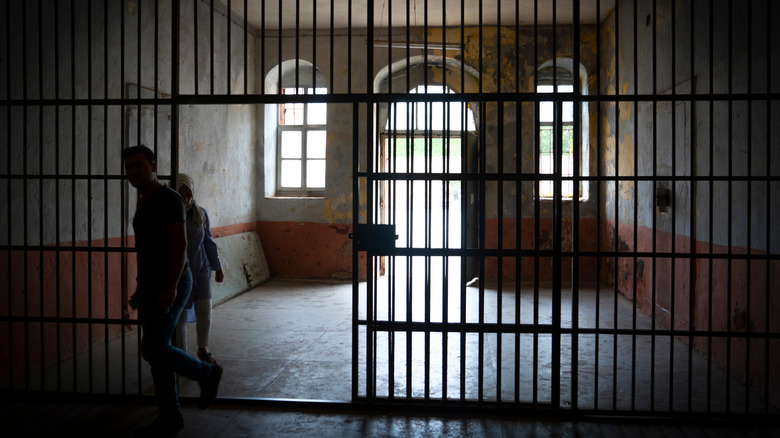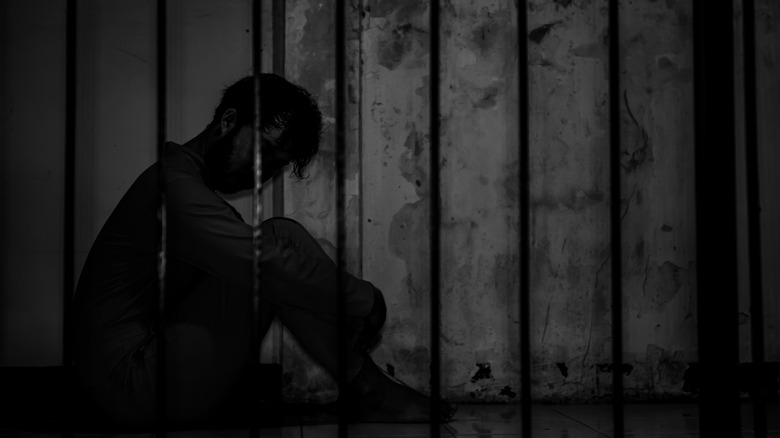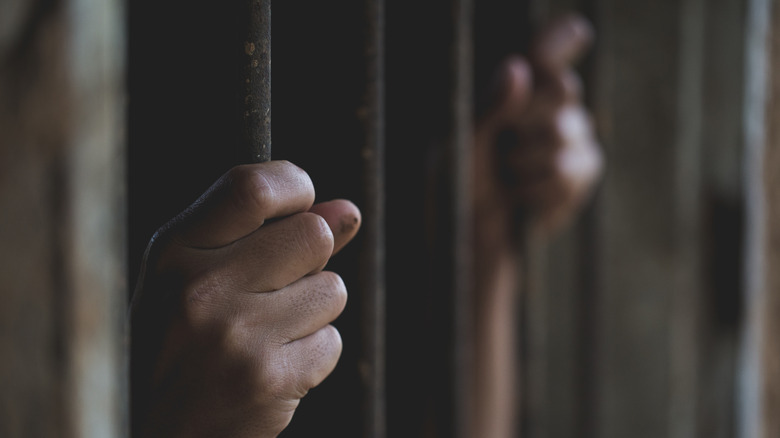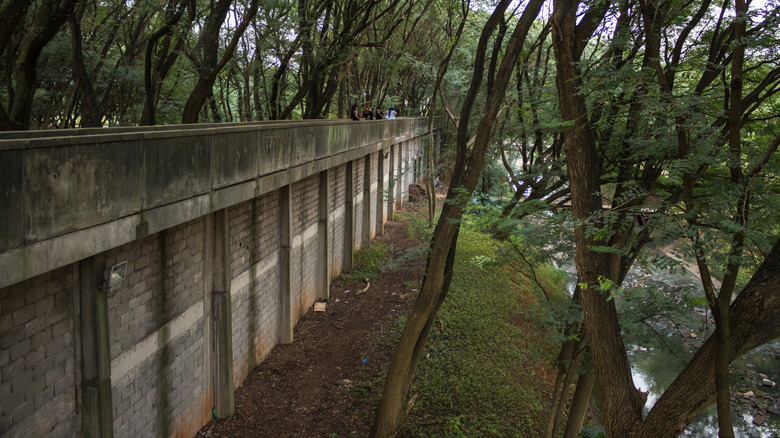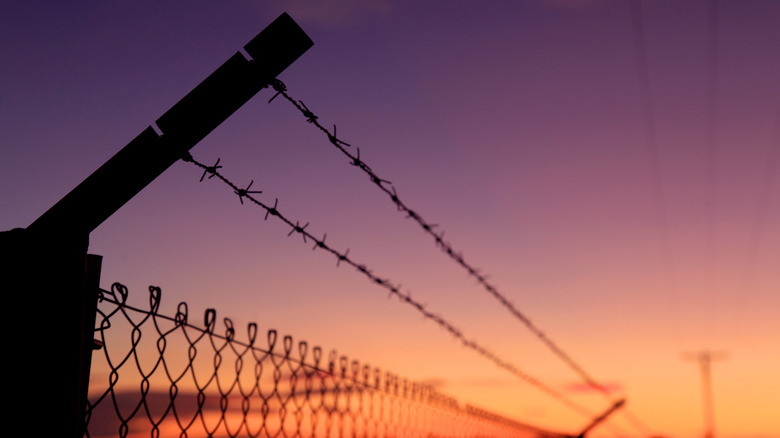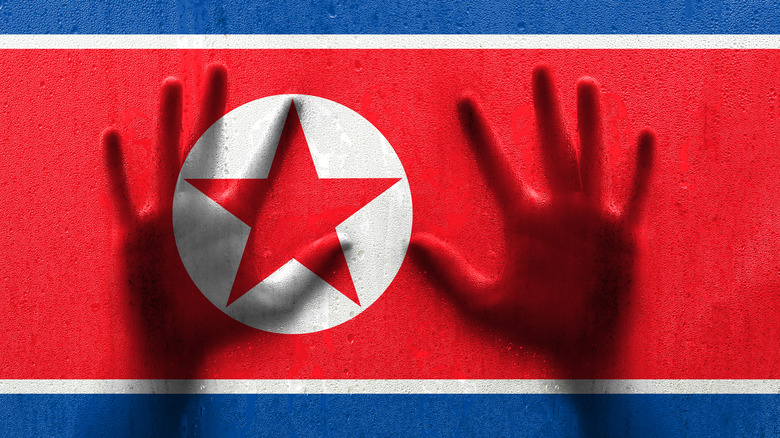The Most Dangerous Prisons In The World
In the United States alone, 2.3 million people are held in confinement, according to the Prison Policy Initiative. Unfortunately, at least 25% of those who go to jail are arrested again within the year. Incarcerated people often come from a background of poverty, are mentally ill, and/or are addicted to drugs or alcohol, and these factors are often amplified in a prison environment. Imagine being held in a prison alongside violent inmates or under the watch of abusive guards. It's a dangerous combination that can lead to mental trauma, injury, or even death.
But just a handful of the world's most dangerous prisons are located in the United States. There are facilities around the world that are much worse and that are known for their deplorable conditions. Some of these prisons have been shut down or renovated due to past human rights violations. Conditions in some are so bad that inmates may be released in a worse state than when they were sentenced. It can be tough enough to re-enter society and live a normal life after serving time, let alone after being beaten, tortured, starved, and raped while incarcerated.
If you find yourself thinking about breaking the law, you may want to think again, especially if there's a chance you could end up serving time at one of the following places. These are the most dangerous prisons in the world.
San Quentin, California
Most Americans are familiar with San Quentin State Prison, a maximum-security facility located in California not far from San Francisco. The correctional facility has been in operation since 1854, according to Britannica. The facility was privately managed when it first opened, and prisoners experienced inhumane living conditions and cruel punishments, such as floggings and being sprayed with water from high-pressure hoses. Floggings and whippings were discontinued in the 1880s, but corporal punishment was replaced by solitary confinement.
It's the only penitentiary in California that performs executions, and it has housed several serial killers and other notorious criminals, including Charles Manson. In 1971, six people died during an escape attempt. The prison has also experienced significant overcrowding, which, combined with concerns about the use of such an old facility, has prompted demands that it be shut down.
During the COVID-19 pandemic, the prison struggled to contain the virus, and over 2,000 inmates contracted the infectious disease, as reported by the LA Times. One correctional officer and 28 inmates died from the virus. The California Department of Corrections and Rehabilitation and California Correctional Health Care Services were criticized for what was labeled "a public health disaster," and the penitentiary was fined $421,880 for not doing enough to curb the spread of the virus.
Bang Kwang Central Prison, Bangkok
Bang Kwang Central Prison in Bangkok, Thailand, has been jokingly referred to as the "Bangkok Hilton." The prison was built between 1927 and 1931 for inmates sentenced to 25 years to life, as well as those who received the death penalty, according to Prison History. It's one of the world's most notorious prisons. Inmates used to be forced to wear leg irons for their first three months inside, which inhibited mobility and was extremely uncomfortable. Those who were sentenced to death were required to wear leg irons for the length of their imprisonment until their execution. The use of shackles was discontinued in 2013, but it's reported that some high-profile and violent prisoners are still kept in leg irons.
The prison has a class system, so prisoners receive food based on how high or low they fall on the hierarchy. While they all receive a bowl of rice and vegetables each day, inmates who want more must have the means to purchase it. As a result, the wealthier inmates fare much better than their poorer counterparts.
In 2001, Judith Payne, an English woman held in Bang Kwang, described her experience in the prison. She was arrested for a drug offense and told the Guardian that everyone slept head-to-toe and couldn't roll over, and that the poorer inmates slept near the toilet hole. In addition, she says that the warders sexually abused inmates and beat them with sticks.
Rikers Island, New York City
Don't forget that it's not just adults who serve prison time. Minors are also known to commit crimes, and they too can end up in dangerous facilities. In 2014, U.S. Attorney Preet Bharara presented a report that revealed that teenagers were exposed to a significant amount of abuse at Riker's Island in New York City. He called out the facility for its use of brute force, verbal insults, and beatings. In 2013 alone, male prisoners who were 18 and younger experienced 1,057 injuries, according to the investigation's findings (via NY Mag).
The report states, "Rikers is a dangerous place for adolescents and a pervasive climate of fear exists." It revealed that officers used "radios, batons, and broomsticks" against adolescent inmates and created an environment that provoked fear.
In addition, Politico reported on statistics from 2019 that revealed there was a significant rise in inmate attacks on one another, staff member assaults, and the use of force by guards against prisoners. Violence had gotten so out of hand that Mayor Bill de Blasio backed a plan to close the facility and replace it with four new jails. "The violence at Rikers has continued almost unabated for decades across multiple mayoral administrations and multiple commissioners," explained City Council Member Rory Lancman, also an advocate of closing Rikers for good. Reuters reports that in October 2019, the New York City Council voted to close the jail complex by 2026.
La Santé, Paris
La Santé prison in Paris was built in 1867 and has housed some of the world's most notorious inmates, including terrorist Carlos the Jackal, war criminal Maurice Papon, and Algerian revolutionary leader and eventual president Ahmed Ben Bella. Poets Paul Verlaine and Guillaume Apollinaire and playwright Jean Genet also served time there, according to the Guardian. At one point, conditions were so deplorable that the chief medical officer, Dr. Veronique Vasseur, went public about the overcrowded facility and its disgusting and dangerous environment in a book (via the Guardian).
La Santé was initially built to hold 1,400 prisoners, but when Vasseur worked there in the 1990s, more than 2,300 inmates lived there. Vasseur described inmates frequently causing bloodshed during knife fights. She explained how it was suffocating and hot and said that there were infestations of rats, cockroaches, and lice. Conditions were so bad that some inmates drank drain cleaner or rat poison to kill themselves so they no longer had to deal with the misery. Others were plagued by skin rashes because they couldn't keep themselves clean in the squalor. Unbelievably, Vasseur received death threats after making these claims about La Santé.
Fortunately, this facility was retooled, probably in part due to Vasseur's report. Authorities shut the prison down for renovation, and it reopened in 2019.
Diyarbakir Prison, Turkey
Diyarbakır Prison was built in 1980 and is located in southeastern Turkey. It was established by the Ministry of Justice but was turned over to the military for a few years before once again being operated by the ministry in 1988, according to Place and See. Like many of the other facilities on this list, it is known for its overcrowding. In the 1990s, the Human Rights Commission in the Grand National Assembly of Turkey found that the prison housed hundreds more prisoners than it was built to accommodate.
Conditions were particularly bad in the 1980s, when inmates were often brutally tortured. Between 1981 and 1984, 34 prisoners died during a period that's been described as "the period of barbarity" and "the hell of Diyarbakır." Amnesty International received thousands of complaints of torture and claims that the practice caused over 100 deaths. Prison authorities were known to beat, blindfold, hose down, and intimidate prisoners. Inmates were deprived of sleep, water, and food. They were hung by their arms, forced to stand for long periods, forced to exercise in hot temperatures, burned with cigarettes, humiliated, and raped.
As recently as 2020, inmate Mehmet Sıdık Mese claimed he was regularly beaten with truncheons and clubs inside the facility, according to the Stockholm Center for Freedom. The prison reportedly tried to cover up these claims.
Maracaibo National Prison (Sabaneta Prison), Venezuela
Sabaneta was built in 1858 and is located in Maracaibo, in the state of Zulia in Venezuela. Over 100 people were killed in a 1994 melee between prisoner gangs that led to a giant fire, according to Spunk Library. The facility was constructed to hold up to 800 people, but at one point, it housed somewhere between 2,500 and 3,000, according to estimates from the National Guard and Ministry of Justice.
Prisoners are often held in the facility for long periods without a conviction. While inmates are supposed to go to trial within eight months of arrest, some spend years behind bars before getting their day in court.
Guajiro inmates often targeted by other prisoners and guards, so they're separated for their safety. But that doesn't mean that they escape the poor conditions that other prisoners must endure. Prisoners who are members of this ethnic group are often treated badly, refused medical treatment, and exposed to harsh conditions. Most violence within Sabaneta is attributed to feuding gangs. In 2013, 15 inmates died in gang fights, and another died from an unrelated incident, as reported by the BBC. Some prisoners were even dismembered and beheaded.
Humberto Prado, Director of the Venezuelan Prison Observatory, reported that Sabaneta was the most violent prison in Venezuela and that 69 people died in 2013 alone — and the year wasn't over. He added that armed inmates actually run most Venezuelan prisons and that guards have little to no control over the population.
Tadmur Prison, Syria
Political dissidents were held and tortured at Tadmur prison in Syria for many years. The French built the facility in the 1930s, and when Hafez al-Assad ruled the country from the 1970s until 2000, the place became known for torturing and executing political adversaries, according to the BBC. Palestinian writer Salameh Kaileh spent two years at Tadmur and noted that inmates did not receive basic human rights and were exposed to "fear and horror."
One day in 1980, after a failed plan to assassinate al-Assad, soldiers gunned down prisoners with machine guns. The actual number of deaths is unknown, but between 500 and 1,000 are estimated to have been killed, many of them members or supporters of the Muslim Brotherhood. Life in general at the prison was brutal. Inmates were prohibited from making eye contact with the guards or other inmates. One prisoner wrote, "When death is a daily occurrence, lurking in torture, random beatings, eye-gouging, broken limbs and crushed fingers... wouldn't you welcome the merciful release of a bullet?"
Prisoners were whipped and beaten by the guards when they first arrived. They were often severely injured, and some were even killed. Former inmates describe feeling that their lives were "simply worth nothing." The facility was destroyed by ISIS in 2015.
Carandiru Penitentiary, Brazil
Carandiru Penitentiary is known for its human rights violations. It was built in 1890 and became so overcrowded in the 20th century that the prisoners created their own rules and took over command from the small number of guards who were employed there, according to Prison History. At one point, the facility held 8,000 inmates, who were often malnourished and received insufficient medical care. Many had transmittable diseases that spread through the prison population.
A 1992 prison riot resulted in 111 deaths. Military police intervened and killed the inmates, even those who surrendered. Commanding officer Colonel Ubiratan Guimarães was arrested but eventually released after several mistrials. He was assassinated in 2006. Doctor Drauzio Varella was a physician at the facility between 1989 and 2001, and he revealed how horrible conditions were at the prison in a book. His testimony led to public outcry and the eventual demolition of the prison in 2002. The surviving building is currently a public museum.
Mendoza Prison, Argentina
In 2015, Italian photographer Valerio Bispuri was granted permission to visit Pavilion 5 of Mendoza Prison in Argentina and document what he saw behind bars. Authorities allowed him to go inside only after he signed paperwork clearing them of all responsibility for his safety, according to the Guardian. Pavilion 5 was known for housing the country's most dangerous criminals. In fact, the inmates were so dangerous that guards would leave meals at specific spots, far away from the prisoners, to protect themselves. The conditions at the facility were so inhumane that the inmates left Bispuri alone, wanting him to publish photographs that showed the world how awful it was. The photographer's risk paid off: Pavilion 5 was shut down not long after the images were shared publicly.
Some years earlier, in 2005, an article by the Inter Press Service described conditions in Argentina's prisons, including Mendoza, as "deplorable." It said that it wasn't uncommon to see sewage flooding in the hallways, and there were reports of inmates hurting themselves to get medical attention. Prisoners had to defecate in plastic bags and relieve themselves in plastic bottles. Activist Josefina Salomón explained, "Inmates, most of whom have not yet even been tried and sentenced, come out worse than when they went in."
Camp 22, North Korea
North Korea is known for its prison camps, which hold hundreds of thousands of inmates. The sites have been likened to Nazi concentration camps, according to Insider. One of the concerns is that outsiders know little about what goes on in these camps. Only a few escapees and former guards have been able to reveal information about the conditions inside. As many as 200,000 citizens have "disappeared" in North Korea and are reportedly living in these camps.
Camp 22 is one of the biggest and most terrifying in the country, according to Free Korea, and satellite photography has given other countries some insight into this forced labor camp. Human rights researcher David Hawk talked with survivors and former guards, who explained that a person entering the detention center would likely be dead or disabled within three months. According to former prisoners, life is so brutal that 20-25% of inmates die annually (per Insider).
A man named Shin Dong-hyuk spent 23 years in a Korean camp and said that he was constantly hungry and that inmates often ate rats and insects to survive. Prisoners commonly become hunchbacks because they lack protein and calcium. They also get frostbite and lose their toes and fingers. In addition, guards are known to torture the prisoners for fun.
Gitarama Prison, Rwanda
Gitarama prison in Rwanda is one of the deadliest prisons on Earth. While it was built to accommodate 600 inmates, it houses as many as 6,000 to 7,000, according to Zee News. It's so overcrowded that people are forced to stand most of the time because there's no space to sit or lie down. The conditions are so bad that inmates often get involved in fights to the death. Even worse? There are also reports of prisoners eating the bodies of the dead to stay alive.
Reportedly, as many as eight prisoners die each day at the facility. Many also have to deal with gangrene, a bacterial infection that causes the death of tissue and that can lead to the loss of toes and other appendages. The inmates must also deal with feces on the floor, and the facility smells so bad you can smell it from a half-mile away, according to the San Quentin News. One in eight inmates held in Gitarama die from disease or violence.
